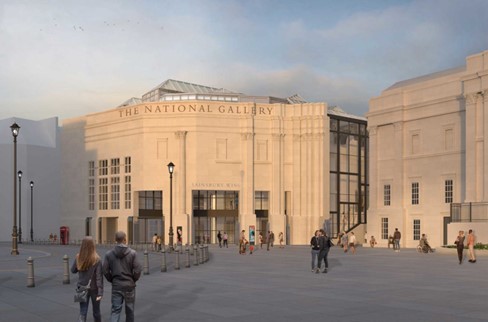Workplace expert, Acas, estimate that workplace conflict costs UK employers £28.5 billion every year, an average of just over £1,000 for every employee, but that isn’t the end to the costs of workplace conflict according to internationally renowned mediator and conflict specialist and president of The Chartered Institute of Arbitrators (CIArb), Jane Gunn.
The time and energy spent on conflict resolution, sickness hours, the distraction of up to 20% of leadership time, the loss of talent through resignations and the effect on work culture is hard to quantify.
“Conflict happens in every workplace but if it can be dealt with well and early on then that has huge financial saving and social implications,” says Gunn. “It is important to have a system for managing issues or conflicts whereby the individuals involved are able to choose from a range of options or methods to try and reach resolution. This can help us manage conflict more easily and at a much earlier stage, and so avoid the problems and cost of escalation related to entering into a formal grievance or litigation.”
Alternative Dispute Resolution (ADR) is an umbrella term for a spectrum of choices including arbitration, negotiation, deal-making, adjudication and mediation. ADR provides an alternative method of handling legal disputes which avoids going to court and can be used as long as communication between the parties involved has not irrevocably broken down. It helps to maintain privacy around disputes by allowing them to be solved in-house, avoiding the public nature of court hearings. This keeps matters contained and confidential whilst simultaneously helping to preserve reputations and relationships.
Whilst most workplace disputes end up in an employment tribunal rather than a court of law, some alternative forms of dispute resolution (ADR) can be used at a much earlier stage.
Some forms of ADR include:
Direct negotiation – where the people involved attempt to resolve the issue between themselves using the exchange of offers and counteroffers. This is appropriate as long as they have acknowledged the problem, have not started the adversarial ‘blame game’, have the skills to resolve the issue and are prepared to devote the necessary time to do so.
Assisted negotiation – this involves a neutral facilitator for one or more parties to enable them to negotiate and to try and create as favourable an environment as possible to reach an agreement.
Mediation – where an impartial mediator helps all parties to find a solution to the dispute which all can agree to. Decisions arising from mediation are based on mutual agreement rather than are legally binding.
Adjudication – where an independent third party makes a decision on the outcome of the dispute after considering both sides.
Arbitration – a process in which the dispute is resolved when the claimant and the other party called the respondent both put their case to an independent person called an arbitrator. Arbitration decisions are legally binding and must be followed by the parties.
Arbitration and adjudication would not usually be used for workplace disputes but are sometimes an option for commercial disputes especially in relation to contractual issues.
Gunn says: “Our adversarial system and dispute resolution processes have long encouraged a culture of fear and power that has influenced every stage of commercial relationships. With the growth and recognition of conflict management systems, there is an opportunity to change the course of history in each workplace. This means starting every commercial relationship with a framework for collaboration, which acknowledges the fundamental principles of agreement with an appropriate early accessible ADR system in place.”
Gunn shares her top tips on when there is a serious work dispute in your organisation.
1) Get mediators involved early when direct, face-to-face communication between those involved is no longer possible, to try and reduce feelings ofoverwhelming mistrust and suspicion and not being heard, before human and financial damage and costs escalate.
2) Have a conflict management system in place that starts with relationship building including mentoring, coaching, an inclusive culture and informal mediation, in addition to a formal ADR system for larger disputes.
3) Have a culture of collaboration, whereby the relationship is what is most important, and differences and issues can be viewed as opportunities to renegotiate the relationship with optimism instead of fear. Creating a culture of collaboration and resolution is a long-term process.
4) Understand that winning isn’t everything. We are driven by a biological urge to win because we are programmed to survive so unresolved or badly resolved conflicts can leave an uneasy feeling at best. Winning for most people is gaining the recognition that they are right, but a real win is where the matter is resolved for both or all parties.
5) Accept that mindsets can’t always be changed. Two people may view a situation in totally different ways. Religious values and beliefs, life experiences, professional speciality and attitudes related to age, gender, sexuality and race frames the picture. These mindsets tend to filter out the possibility that another person might have a valid point resulting in issues related to conflict resolution.
6) Consider arbitration to resolve the dispute. Arbitration involves calling upon a third party to serve as a judge who listens to both sides of an argument and renders a decision which they feel is most effective and appropriate for both parties. Like mediation, arbitration tends to be more cost effective than litigation.
7) Know the dispute is not the only problem – it is just the external outpouring. There are always underlying issues when conflicts have got out of hand and a deep look into the culture of an organisation is vital for long term gain.










